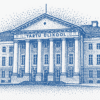
1632
University of Tartu
The University of Tartu was founded as the …

1810
Space is endless
The Tartu University observatory opened in 1810, and ten years …

1824-1826
World-class cartography
The discoveries of Baltic German explorers from today’s Estonian territory …

1836-1841
Surgery
Nikolai Pirogov, who worked as a professor at the University of Tartu from 1836 to 1841, is recognised as the founder of experimental surgery. He emphasised the significance of…

1843
The science behind permafrost
Volcanic eruptions showed that the Earth’s interior is hot. Therefore, …

1846
Pharmaceutical science
Modern pharmaceutical studies were born from experiments conducted in chemistry and physiology laboratories in the mid-19th century. The number of products sold as medicine decreased, as illnesses began to…

Animal behaviour
In the latter half of the 19th century, some biologists working in Tartu, including zoologist Jakob von Uexküll, a University of Tartu graduate, were sceptical about certain aspects of…

1859
The beginning of nature conservation
Can human activities cause animal species to go extinct? Karl Ernst von Baer, a graduate of the University of Tartu and the discoverer of the laws of animal embryonic…

1860s
Ice age theory
A few centuries ago, it was hard for scientists to imagine that …

1862
Why does blood coagulate?
The University of Tartu was one of the first universities in the world to separate the study of physiology from anatomy in 1820. By the mid-century, Tartu had established…

1866
Mammoths
Until the early 19th century, scientists believed that animals and plants …

1877
Bringing chemistry to daily life
The year 1877 saw the start of the scientific career of …

1886
Temperance movement
At the end of the 19th century, temperance advocates started to use more scientific arguments in the fight against alcohol. Physiologist Gustav von Bunge, who studied at the University…
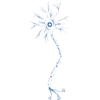
1907
Neurosurgery
Ludvig Puusepp was one of the first to combine the fields of neurology and surgery. In 1907, he was appointed as the director of the world’s first neurosurgery clinic…

1920s
Ice age and the sun
Astronomer Ernst Julius Öpik made a significant contribution to the …

Finno-Ugric languages
In the 19th century, Hungarian and Finnish linguists searched for related languages (Uralic languages) as far as Siberia and found them. For example, the Khanty, Mansi, Komi and Udmurt,…
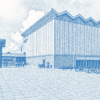
1936
Tallinn University of Technology
By the 15 September 1936 Act of the Head of State, the engineering school, which had opened in 1918, was granted …

1950s
Energy-efficient lighting
In the 1950s, Feodor Klement, former rector of the University of Tartu …

1959
Computer science
Computers were adopted into civilian use in the 1950s. The first digital computer in Estonia made it to the University of Tartu in 1959. It was named Ural-1, and…

1960s
Cultural semiotics
Professor Juri Lotman of the University of Tartu pioneered studies of structural poetics and cultural semiotics in the 1960s. He founded the Tartu Semiotic School. Semiotics is the study…

1967
Magazine Horisont
The oldest popular science magazine in Estonia, Horisont, began publication and is still being published today.

1968
Photoluminescence
In 1968, Peeter Saari, together with Karl Rebane and Vladimir Hižnjakov, discovered the phenomenon of photoluminescence, which was officially registered as a discovery in 1981.
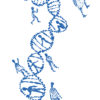
Studies of human past
Scientists have long sought answers to the origin of modern humans and the formation stories of human groups found on the planet today. In the 1990s, Professor Richard Villems…

1995
Health protection
In the 1960s, with the beginning of the Soviet space programme, scientists from the University of Tartu began comprehensive research on human microbiota. Akivo Lenzner’s research group investigated the…

1997
Psychology
At the University of Tartu, psychology using mathematical methods emerged in the 1970s, when Peeter Tulviste, Jüri Allik and other Estonian psychologists of the new generation started to contribute…
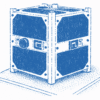
2013
ESTCube-1
Estonia’s first satellite, ESTCube-1, was sent into Earth’s orbit in 2013 under the supervision of Mart Noorma. Most of the work on constructing the 10 x 10 x 10…
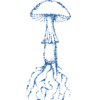
Fungi and biodiversity
In recent decades, scientists have more clearly determined the importance of fungi in the ecosystem. Estonia was brought to the world stage in mycology through the efforts of Erast…

Personalised medicine
At the beginning of the 21st century, the dream of personalised medicine started to become a reality with the sequencing of the human genome. For the next step it…

Biodiversity and adaptation
Human activity and climate change have significantly influenced the growth of plants and biodiversity in ecological communities. These issues have been analysed by the workgroups of Plant Ecology Professor…